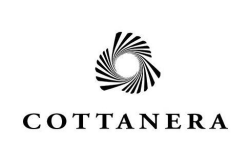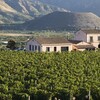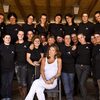Cottanera
The history of Cottanera began in 1962 with Francesco Cambria when, as a retreat from his career in Messina, he purchased 100 hectares (247 acres) of vineyards and hazelnut groves near his birthplace in Randazzo, at the foot at Mt. Etna. Francesco grew hazelnuts and initially sold his grapes to the local cooperative, but with the implementation of DOC status for Etna wines in 1968 and a drop in the hazelnut market, he soon decided to focus his attention on growing grapes for bulk wine production, replanting the hazelnut groves to vines. In the late 1980’s, Francesco’s son Gugliemo decided to build a winery to produce his own wine instead of selling the grapes. His success in selling this wine “sfuso” (in bulk) to locals and restaurant prompted him to shift his focus to quality wine production, improving his father’s vineyards and embracing lower yields. Gugliemo was joined by his brother Enzo in the new venture and thus, in the mid-90’s the first wines labeled as “Cottanera” were born. The name Cottanera comes from an ancient village positioned alongside the family vineyards, along the banks of the river Alcantara. The brothers began by planting international grape varieties, but the focus soon turned to traditional Etna grapes, and Nerello Mascalese, Nerello Cappuccio and Carricante vines were planted as well. The Cottanera philosophy is best
captured in a quote by Gugliemo, “In looking to the future we can but consider all that we have received. Land, as I was taught by my father, is invaluable, as it is the beginning of all, and is what we will become.” After the death of Guglielmo, Cottanera is now guided by his brother Enzo and Gugliemo’s children Mariangela, Francesco and Emanuele.
Philosophy
Today Cottanera is one of the larger estates on Etna with roughly 65 hectares (160 acres) of vineyards on a 100 hectare (247 acres) estate. The vineyards and winery are located in Castiglione di Sicilia (province of Catania), where all phases of production, from harvest to bottling, are carried out. Resting about 700 meters (2,296 feet) above sea level over lava alluvial and clay soils, the vineyards are positioned in 5 different “contradas” (local districts) – Cottanera, Diciassette Salme, Calderara, Zottorinoto and Feudo di Mezzo – on the northern slope of Mt. Etna, home to most of
the volcano’s best-known wineries.
Cottanera and the Cambria family endeavor to create a center of modern, innovative viticulture, with the goal of improving the quality of vineyards on Mt. Etna and producing wines that express the particularities of this unique territory. According to tradition, almost all work in the vineyard (including harvest) is carried out by a team of women, who’s gentleness is essential in the care of vineyards and know-how continues to be passed down generation to generation. Of the 65 hectares covered with vines, over 40 are cultivated with grapes destined to the production of Etna DOC. In 2011, after changes regarding the production methods of Etna DOC, the geographic area of origin of the
grape could be indicated on the label, highlighting the differences and singularities between the various Etna
contradas, giving a voice to the wine and the territory itself.
Though Cottanera is not certified organic, the estate practices sustainable agriculture, imposing as little impact on the land and environment as possible. No chemical herbicides are used and natural products, such as copper and sulfur, are preferred. However, if intervention is necessary in order to save a vintage, the agricultural team acts in the best interest of the overall well-being of the vineyard in order to maintain the health of the vines.
Biography
The story begins with Francesco Cambria, who in 1962, bought 100 hectares of
vines and hazelnut groves near his birthplace in Randazzo. Francesco
cultivated hazelnuts and also initially sold grapes to the local cooperative, but
with the arrival of DOC status for Etna in 1968 and hazelnuts losing market
share, he soon decided to focus on grape growing for bulk wine production,
replanting the hazelnut groves to vines. In the late 1980s, Francesco’s son
Guglielmo decided to build a winery to make his own wine, rather than selling
the grapes, and he was quite successful selling it “sfuso” in demijohns to local
restaurants. The initial success of these wines pushed Guglielmo to progress to
quality wine production, so in the mid-1990s, he improved his father’s vineyards
and embraced lo
Contact Us














